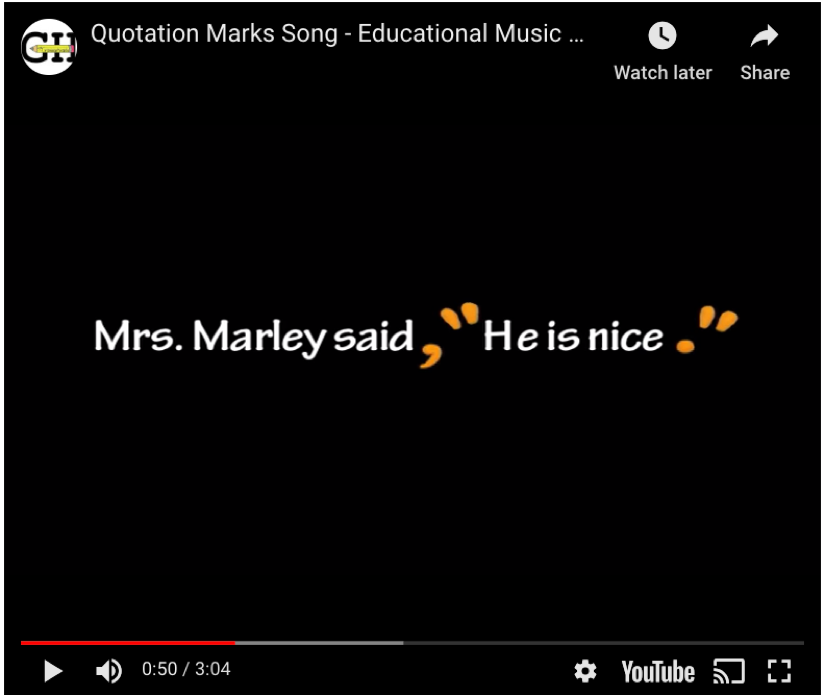Intern’s Corner: Quote those Quotes
As a student, I know plagiarism is a big deal to both my instructors and educational institution. One of the ways of avoiding plagiarism is knowing when and how to use quotation marks, along with proper citations and references of course. This blog post will provide quick snapshots regarding the tutorials Excelsior Online Writing Lab has to offer regarding quotations.
Because I am mentioning plagiarism, and this is my second to last week here as the intern for Hoot, I thought I would follow up my last few blog entries with a deeper look at the plagiarism tutorials the OWL offers. Those blog post will be, Only You Can Prevent Plagiarism I and Only You Can Prevent Plagiarism II.
Grammar Refresher: Quotation Marks & Ellipses
The OWL provides another way for students to test their skills, and perhaps learn new ones with the tutorial, Quotation Marks & Ellipses. The tutorial provides 19 slides with invaluable information regarding how to properly use quotation marks.
(Screenshot of slide three from Quotation Marks and Ellipses tutorial)

There is also a short video with a song regarding how to avoid plagiarism and providing examples as to where punctuation marks should be placed. The OWL also emphasizes the difference between quoting and paraphrasing when using a source and to always use an in-text citation when doing so.
The tutorial then mentions several instances where you might need to use quotation marks, such as dialogue and quoted material. There is also the matter of single quotes, in that you are quoting something within a quote:

The tutorial then drives into ellipses, those three-dot punctuation marks we sometimes see in emails, texts, or literature. The OWL goes into detail as to how an ellipsis should appear within your text as well as why ellipses should not be used as pauses, as we see in emails or text, but when information is omitted. However, an omission of words should not change the meaning of the information provided.
(Screenshot of slide 10 regarding ellipses)

Using Quotations
Another helpful tutorial is Using Quotations. The tutorial provides tips as to the proper use of quotations, however, the OWL stresses that quotes should not be used too frequently. A good rule of thumb, the OWL suggests, is to remember that you only want to use the quote when it is absolutely necessary, when the source has no other way of rephrasing, or when you need to use an experts voice to further support the point you already made. To help you with no rely on the quote to make the point for you, the OWL offers MEAL plan to analyze your information so that you can present it in your own words.
The next few pages in this tutorial offer help with Using Phrase & Words, Using Sentences, and Long Quotations. There are examples and detailed explanations of how to use short quotes within your writing, how to properly integrate a long sentence into your thought process, and how to format long quotes into your paper.
(Screenshot of an incorrect way to use a quote and how to fix it)

Grammar Essentials: Punctuation: Quotation Marks
Another tutorial offered by the OWL is under Grammar Essentials: Punctuation: Quotation Marks. This tutorial first offers a little ditty and visuals to help you see how easy it is to use quotation marks provided by YouTube (Grammarheads, 2012).
(Screenshot of Quotation Marks Song – Education Music [Grammarheads, 2012, 0:50])

The following pages discusses the different reasons we use quotation marks, such as dialog, quoting sources, and single quotes. There are also examples provided so you know what sentence formatting looks like. The tutorial also reminds you that if you are paraphrasing you do not need to enter quotation marks. For a refresher on paraphrasing, check out the tutorial Drafting & Integrating: Paraphrasing, Paragraphing: MEAL Plan, and APA In-Text Citations.

The last tutorial in this series is Try It Out, which helps you test your knowledge of how to properly use quotation marks as well as provide some insight into the life and mind of Edgar Allen Poe. This tutorial will be a “tell-tale” sign of your capabilities.
Grammar Essentials: 20 Most Common Grammar Errors: Quotation Error
A short tutorial the OWL provides is one regarding Quotation Error, found in the 20 Most Common Gramm Errors section. The problem is where to put punctuation marks, but equally puzzling is when to know not to use one at all. Check to see if you know the answers.
Final Thoughts
The tutorials offered by the OWL do not disappoint in providing a vast array of examples of how quotations marks can and should be used. The OWL is very helpful in providing examples as to what properly punctuational sentences look like. Although proper quotation mark usage may seem like a small thing, proper quotation marks can mean the difference between a good paper or a poorly constructed and or even inadmissible paper.
References
Grammarheads. (2012, September 12). Quotation marks song [Video file]. Retrieved from http://www.youtube.com/watch?v=OLB1IUNdoSE
Ginger Hamblin is an intern for the Excelsior University Online Writing Lab. She has been a student of Excelsior University for almost two years and is pursuing her Bachelor of Science – Liberal Arts in Professional and Technical Writing. She is a writing enthusiast, painter, wife, and mother of three boys.
